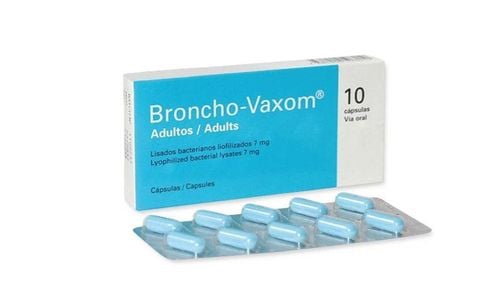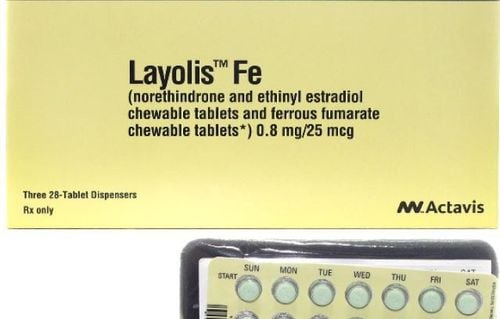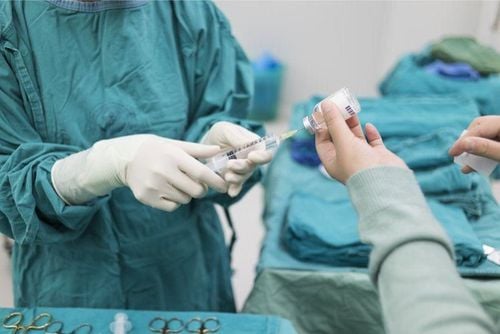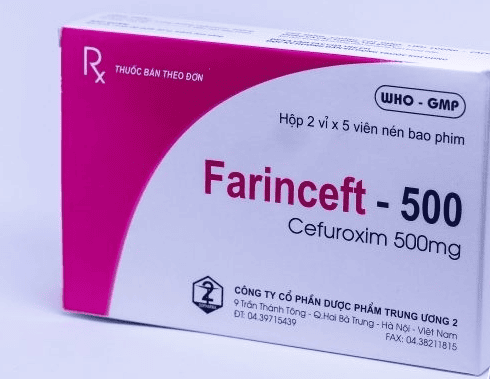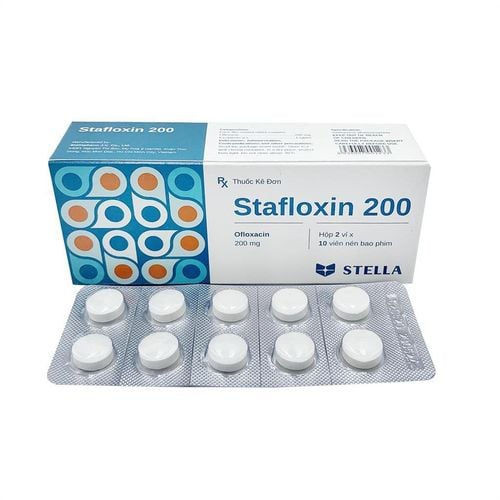This is an automatically translated article.
BioTaksym is a drug indicated for the treatment of bacterial infections, brain abscesses, and respiratory tract infections. The following article gives you a clear understanding of the uses and issues to note when using the drug.1. What is Biotaksym?
Biotaksym injection with the active ingredient Cefotaxime is used to treat certain infections caused by bacteria including pneumonia and other lower respiratory tract infections; gonorrhea (a sexually transmitted disease); meningitis (infection of the membranes surrounding the brain and spinal cord), cervicitis . The cefotaxime injection may also be used before surgery, during and after a cesarean section, to prevent the patient from getting an infection. Cephalosporin injection is in a group of medicines called cephalosporin antibiotics.Biotaksym belongs to a class of drugs called Cephalosporins, 3rd generation. Using antibiotics when they are not needed increases your risk of developing an infection later in life that can't be treated with antibiotics.
2. Uses of BioTaksym
Biotaksym injection is used to treat the following severe infections when it is known or is likely to be caused by organisms sensitive to cefotaxime.Lower respiratory tract infections. Kidney infections and urinary tract infections. Skin and soft tissue infections. Genital infections due to gonococci, especially when penicillin is unsuccessful or unsuitable. Intra-abdominal infections (including peritonitis). Lyme-borreliosis (especially stages II and III). Acute meningitis in the case of gram-negative microorganisms in combination with another appropriate antibiotic. Sepsis in the case of gram-negative organisms in combination with another suitable antibiotic. Endocarditis in the case of gram-negative organisms in combination with another appropriate antibiotic. Preoperative prophylaxis in surgical procedures such as colorectal, gastrointestinal, prostate, urogenital and gynecological in patients at risk of postoperative infection. Cefotaxime should be used in combination with another antibiotic capable of anaerobic encapsulation in the treatment of intra-abdominal infections. Cefotaxime should be used in combination with aminoglycosides in the treatment of infections caused by Pseudomonas.
Protection is best covered by achieving appropriate concentrations in tissue at the time contamination is likely to occur.
It is generally recommended to stop taking the drug within 24 hours because continued use of any antibiotic during most surgical procedures does not reduce the rate of subsequent infection.
3. Interactions with other medicinal products
3.1. Biotaksym injections and other antibiotics
To the extent possible, this medicinal product should not be combined with agents with bacteriostatic activity (e.g. tetracycline, erythromycin, chloramphenicol or sulphonamides), as antagonistic effects have been observed in association with antimicrobial activity. bacteria in vitro. Synergistic effects may be produced in combination with aminoglycosides.There have been reports of an increased risk of nephrotoxicity and nephrotoxicity when cefotaxime is used concomitantly with cephalosporins or aminoglycosides. Dosage adjustment may be required, and renal function should be monitored.
3.2. Biotaksym injection and Probenecid
Concomitant use of Probenecid results in higher, longer-lasting plasma concentrations of cefotaxime by interfering with tubular transport and thus slowing its excretion.3.3. Biotaksym Injections and Potentially Nephrotoxic Drugs and Loop Diuretics
In combination with potentially nephrotoxic drugs (eg, aminoglycoside antibiotics, polymyxin B and colistin) and with potent diuretics, (eg, furosemide), renal function must be monitored because The nephrotoxicity of the cited substances can be emphasized.4. Dosage of the drug
4.1. Dosage for adults
Uncomplicated infections: 1g every 12 hours. Moderate to severe infections: 1–2g every 8 hours. Infections often require higher doses (eg, sepsis): 2g IV every 6-8 hours. Life-threatening infections: 2g IV every 4 hours. Gonococcal urethritis or cervicitis: 0.5g IM once. Rectal gonorrhea: 0.5g (women) or 1g (men) IM once. All: up to 12g/day. Postoperative prophylaxis: give 1g as a single dose 30–90 minutes before surgery. Caesarean section: First dose: 1g IV as soon as the umbilical cord is clamped; 2nd and 3rd dose: 1g at 6 and 12 hours after the first dose.4.2. Dosage for children
Neonates up to 1 week of age: 50mg/kg IV every 12 hours. 1–4 weeks of age: 50mg/kg IV every 8 hours. Over 1 month of age (<50kg): 50–180mg/kg divided equally 4–6 times. ≥ 50kg: when mature; 12g/day max.5. Fertility, pregnancy and lactation
Pregnancy: The safety of Biotaksym has not been established in human pregnancy. Animal studies have not shown direct or indirect harmful effects on reproductive toxicity. However, there are no adequate and well-controlled studies in pregnant women.Biotaksym crosses the human placenta. Therefore, Biotaksym should only be used during pregnancy if the expected benefit outweighs any potential risk.
Lactation: Biotaksym is excreted in breast milk in low concentrations. Use during lactation may lead to effects on the physiological intestinal microbiota in the neonate, causing diarrhea, yeast-like fungal infections and may also lead to sensitization in the neonate. Therefore, a decision must be made whether to discontinue nursing or to discontinue treatment, taking into account the benefit of breastfeeding and the benefit of therapy to the mother.
6. What are the possible side effects of Biotaksym?
Biotaksym can cause serious side effects including:Shortness of breath. Swelling of your face, lips, tongue, or throat. Severe stomach pain. Watery or bloody diarrhea. Skin rash. Bruise. Severe tingling, numbness. Muscle weakness, pain. Convulsions, fever. Sore throat. Skin pain followed by a red or purple skin rash that spreads (especially to the face or upper body) and causes blistering and peeling.
7. Who should not take Biotaksym
Known or suspected hypersensitivity to Cefotaxime or other cephalosporins. Allergic cross-reactivity may exist between penicillins and cephalosporins.Never use Cefotaxime formulated with Lidocaine Injection BP:
By intravenous route In neonates under 30 months of age In subjects with a history of hypersensitivity to Lidocaine or other local anesthetics of this class. amide type In patients with non-arrhythmic heart block In patients with severe heart failure.
Please dial HOTLINE for more information or register for an appointment HERE. Download MyVinmec app to make appointments faster and to manage your bookings easily.




